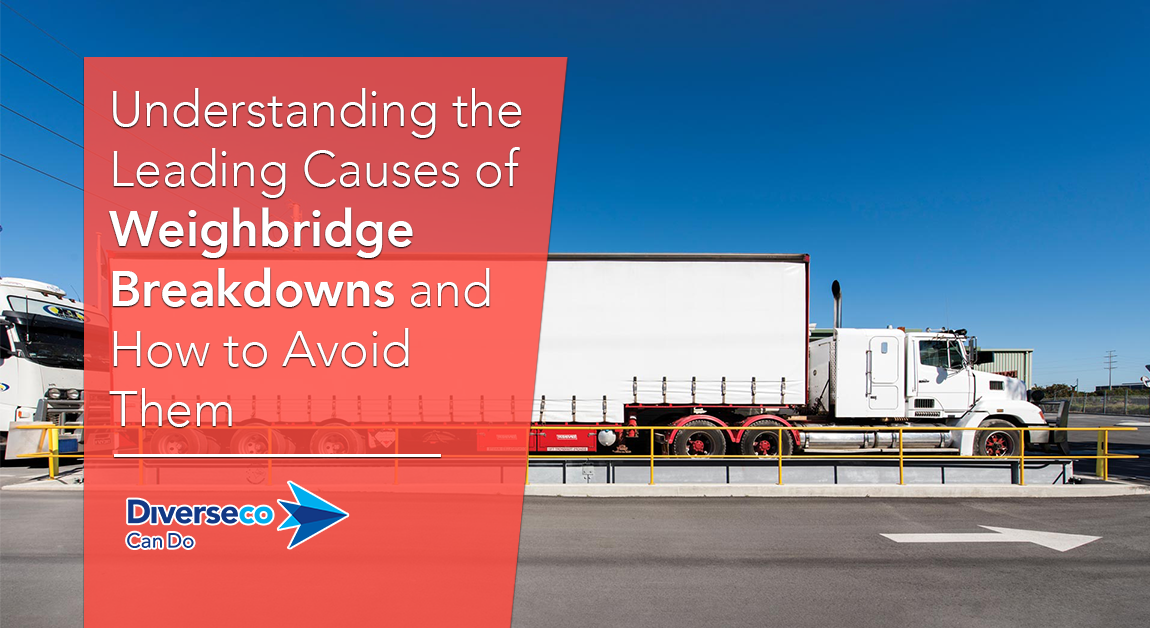
A weighbridge breakdown doesn’t only cost money in terms of repairs – it can also mean costly downtime, loss of production, time delays or penalties, expensive repairs or even fines because of legal breaches.
A programme of preventative maintenance, ongoing inspection and regular servicing of both the mechanical and the electrical components is the best preventative measure than an organisation can take to minimise the possibility of a weighbridge breakdown, but let’s look at some of the leading causes of breakdowns and what can be done to avoid these.
Moisture
Moisture is the arch enemy of many weighbridge components – particularly load cells which are the most essential, but also the most vulnerable, part of any electronic weighing system. Any moisture – be it rain, ice, snow or humidity – which finds its way through the seals will cause harm to the load cell connections and compromise their ability to sense force or weight accurately. Very often, a changing or fluctuating weight display is a sign of moisture in the load cell, the cable, connector or the load cell terminals and if this happens, it is imperative to have the problem pinpointed and rectified as quickly as possible.
Water can also be an issue in pit weighbridges if there is insufficient drainage, as water levels can rise and submerge the load cells. The height of the water table and the surface water drainage system need to taken into account when constructing a pit weighbridge. Should the pit become flooded due to storm activity or a blockage in the drainage system, it is important to have the weighbridge system inspected by a qualified technician once the water levels have subsided.
Build-up of debris and dust
An accumulation of, debris such a mud, leaves or sand, dirt, snow or, ice can cause problems. Regular inspections should be undertaken and a simple, ongoing programme of cleaning and sweeping should prevent build-ups from occurring. Care should be taken when carrying out any cleaning programme and it is important to remember not to use chemicals or a pressure hose to clean sensitive parts of the weighbridge.
Load cells
In addition to moisture, there are many other factors that can impair the performance and weighing accuracy of the load cells. These include shock, overloading, lightning strikes, mishandling, vibration, earth tremors or earthquakes, a sudden strong surge in electrical current or damage from chemicals. Because a weighbridge is a precision instrument, and particularly if it is being used for trade purposes, it is imperative to have the weighing system checked by a qualified technician to ascertain if there is any suspicion that the accuracy of the load cells has been compromised.
Cable failure
Cable failure is another common cause of compromised weighbridge functionality and regular inspections should be made to ensure that the cables remain correctly installed and haven’t become over-tight due to load cell rotation, rotating effectively if necessary. Additionally, another major concern is cable damage from rodents.
Damage to the junction box
An important component of a weighbridge is the junction box and this is where many weighbridge problems occur. The box has to be sealed extremely well in order to prevent debris or moisture from entering and harming the sensitive circuitry inside, but because they are the point of access (which happens fairly frequently), they are vulnerable to damage.
Driving too fast
Problems can also occur when drivers travel too fast on or off the weighbridge – or they use excessive braking. To prevent this from happening, highly visible speed restriction signs should be erected as well as traffic control measures implemented including humps, barriers and traffic lights.
Mechanical failure
Some weighbridge breakdowns are caused by mechanical failure, which is generally a result of inferior workmanship or materials. The structural integrity of a weighbridge is crucial and no compromise should be taken when it comes to the quality of construction or materials as this can lead to corrosion, excessive flexing of beams, component failure, flooding etc.
Breakdowns can’t always be avoided, but with quality construction and ongoing preventative maintenance and servicing, the possibility of downtime and costly repairs can be minimised.
If you want to learn more about how to prevent weighbridge breakdowns, you should contact Australia’s leading weighbridge manufacturer, Diverseco.

